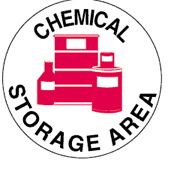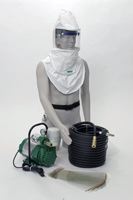 |
 |
| MSDS Topics |
Free Sites | FAQ's | Regulations | Glossary | Software | Suppliers |
| Books | Forum | Poll | Fun stuff | Quiz | Store | |
| MSDS and safety supplies | Search ALL our MSDS info | |||||
 | |||
 |
 |
 |
|
| Title: 03/15/1989 - Application of the HCS to certain products containing crystalline silica. | |
| Record Type: Interpretation | Standard Number: 1910.1200(b)(2) |
| NOTICE: This is an OSHA Archive Document, and no longer represents OSHA Policy. It is presented here as historical content, for research and review purposes only. |
March 15, 1989
Mr. Norman W. Bernstein
Attorney at Law
Jenner and Block
One IBM Plaza
Chicago, Illinois 60611
Dear Mr. Bernstein:
This is in response to your letter of February 11, to Assistant Secretary John Pendergrass, on behalf of your client, United States Gypsum Company, regarding application of the Hazard Communication Standard (HCS) to certain products containing crystalline silica.
|
According to your letter and previous information provided by you to the rulemaking record for the HCS, your client produces materials which contain crystalline silica. However, test data generated by U.S. Gypsum appear to indicate that there is no measurable exposure to crystalline silica under the normal conditions of use for the products involved. Your letter addresses specific questions regarding the article definition and the requirements for coverage of mixtures. It does not appear to the Occupational Safety and Health Administration (OSHA) that the answer to your underlying question relies on either of those parts of the standard. The applicable provision of concern is in the scope and application of the rule, paragraph (b)(2), which states: "This section applies to any chemical which is known to be present in the workplace in such a manner that employees may be exposed under normal conditions of use or in a foreseeable emergency." If appropriate sampling and analysis is conducted for the hazardous chemical of concern (i.e., standard industrial hygiene detected methods are followed), and the presence of the chemical is not detected, then for purposes of hazard communication, the chemical is not "known to be present in the workplace in such a manner that employees may be exposed" and thus is not covered by the rule. |  Encourage proper work habits with non-slip floor markers, signs, and labels from Safety Emporium. |
If those data are a proper characterization of the range of anticipated downstream exposures, it appears that the rule would not apply to the crystalline silica in those products. U.S. Gypsum may consider that data in the hazard determination process for its products with regard to the requirements to disclose the hazards of crystalline silica.
Specific decisions regarding compliance with the rule are made in the context of enforcement activities in each individual workplace inspected. If OSHA inspects the workplace of an employer using U.S. Gypsum's products, and detects exposure to crystalline silica, U.S. Gypsum would be subject to citation for failure to comply with the HCS.
One consideration in this regard is the length of sampling time U.S. Gypsum used in its studies. Although we recognize that the operations that would normally involve use of these products result in intermittent exposures, and the sampling strategy used attempted to allow for this and build in a safety factor as well, OSHA generally samples for periods as close to an entire workshift as possible. This difference in sampling time could result in the detection of crystalline silica, where the shorter sampling times did not. Therefore, it is possible that objective data generated by OSHA for a specific worksite would find that there is exposure and information should have been provided under the HCS. U.S. Gypsum may wish to consider this possibility in their determination to rely on the data presented.
|
With regard to the letter you submitted on November 21, 1988, requesting reconsideration of the Agency's September 20, 1988, denial of a petition submitted by the National Stone Association, OSHA does not believe that any new facts or evidence have been presented which would in any way alter the Agency's determination regarding the carcinogenicity of crystalline silica for purposes of hazard communication. The position described in the September 20, 1988, letter still applies, and your petition for modification of that position is hereby denied. The other issues you raised primarily involved the detectability questions that are discussed in this response. Although they were raised in the context of the petition as questions of feasibility, they were actually simply questions regarding OSHA's interpretation of the applicability of the rule. This letter provides the relevant interpretations You also requested an administrative stay pending the reconsideration of the issues raised. As this reconsideration is now completed, the request for an administrative stay is also denied. As you know, your suggestions for modifications to the rule itself are part of the public docket for the current rulemaking on the HCS, and they will be considered as a final rule is developed. |  If you are working around airborne silica, consider a supplied air respirator system like this one from Safety Emporium. |
Sincerely,
Charles E. Adkins
Director Health Standards Programs
| NOTICE: This is an OSHA Archive Document, and no longer represents OSHA Policy. It is presented here as historical content, for research and review purposes only. |
The official, public domain, OSHA version of this document is available at http://www.osha.gov/pls/oshaweb/owadisp.show_document?p_table=INTERPRETATIONS&p_id=19764&p_text_version=FALSE